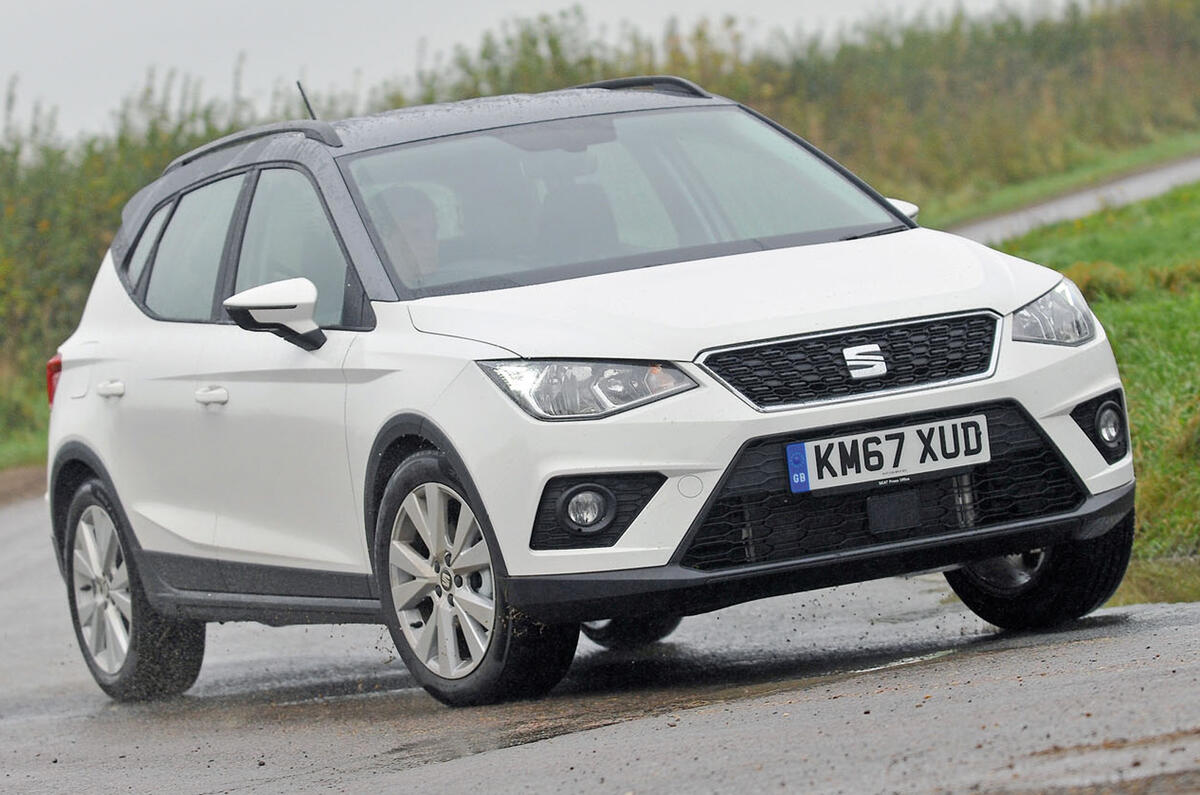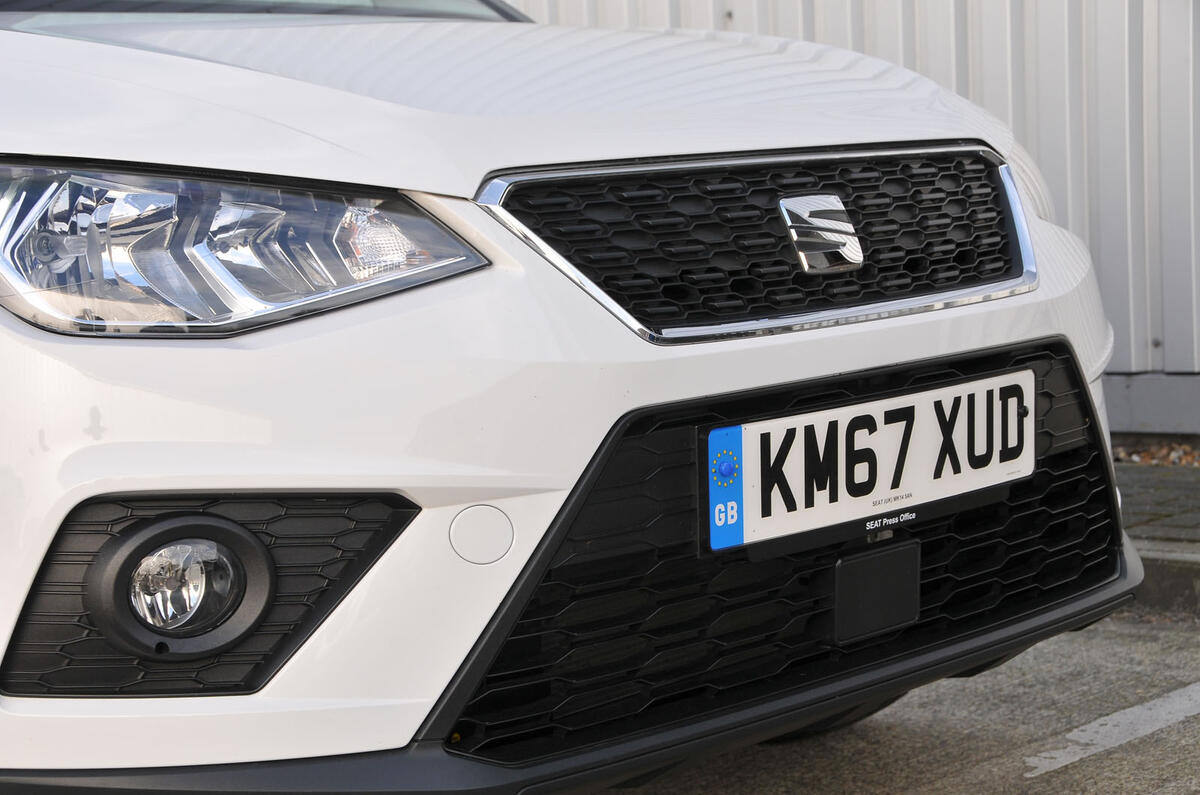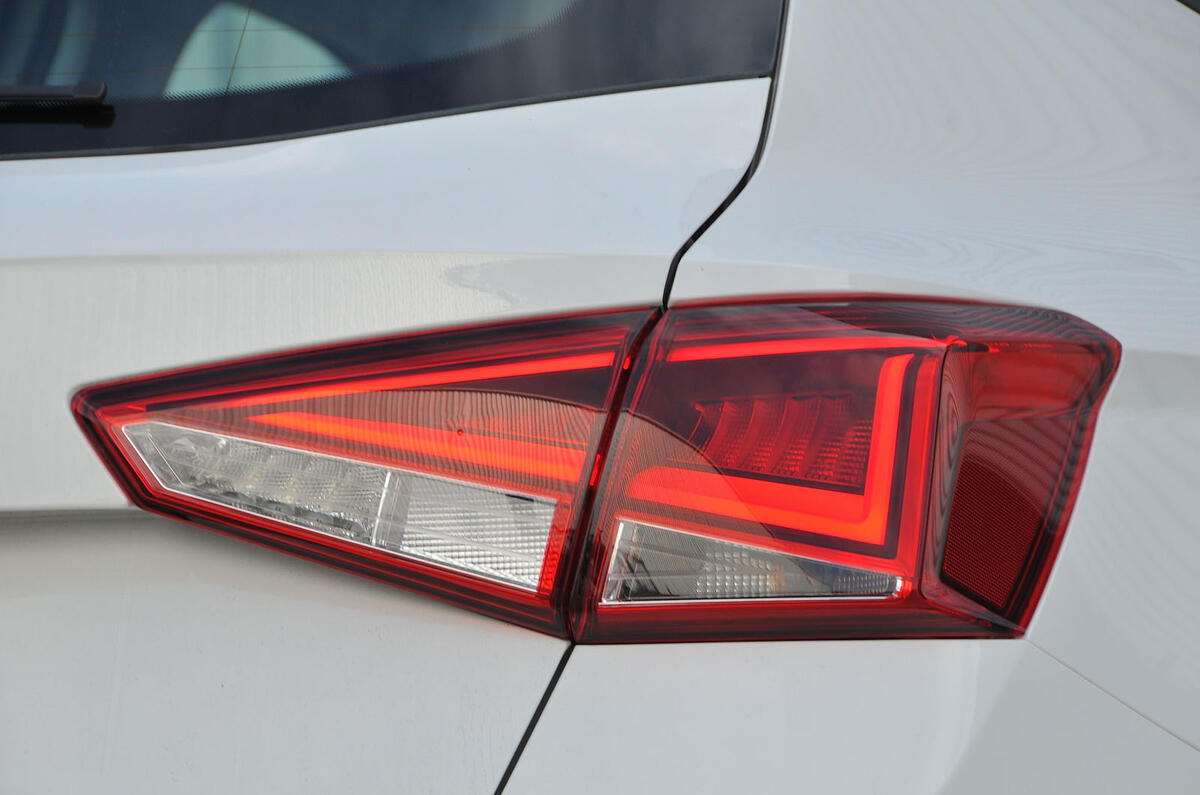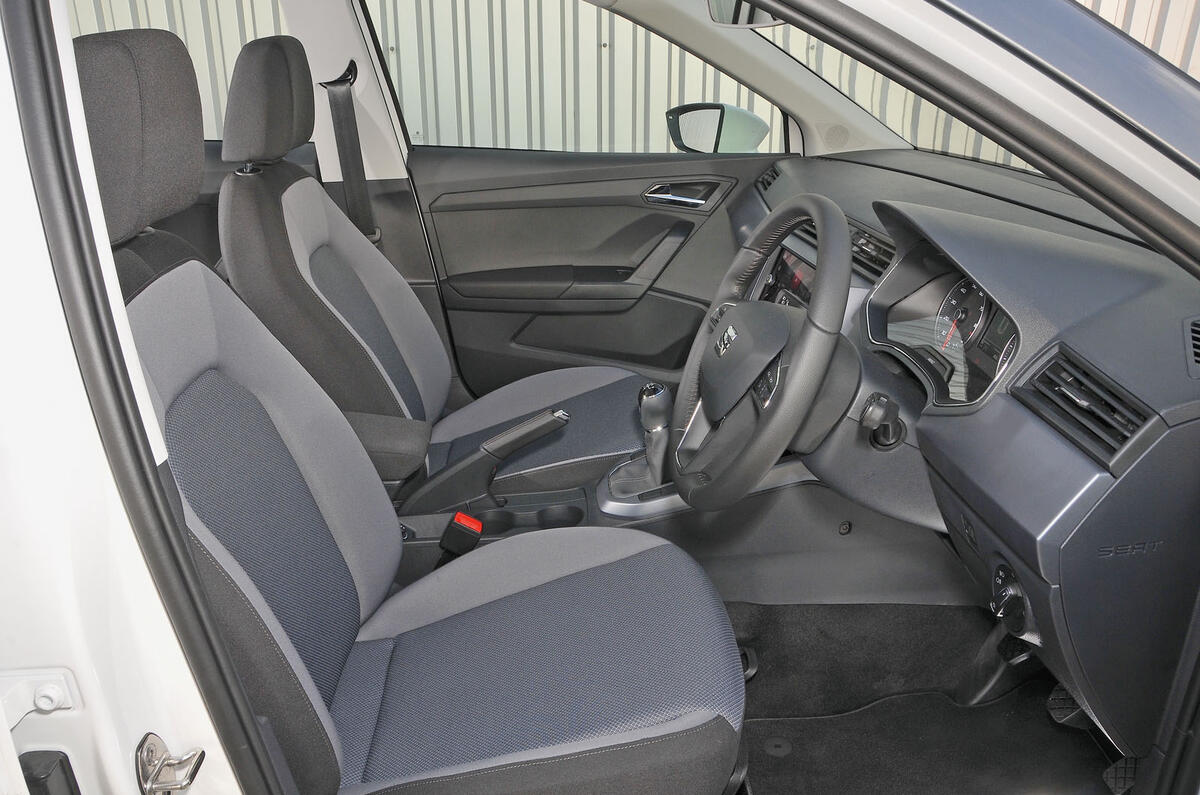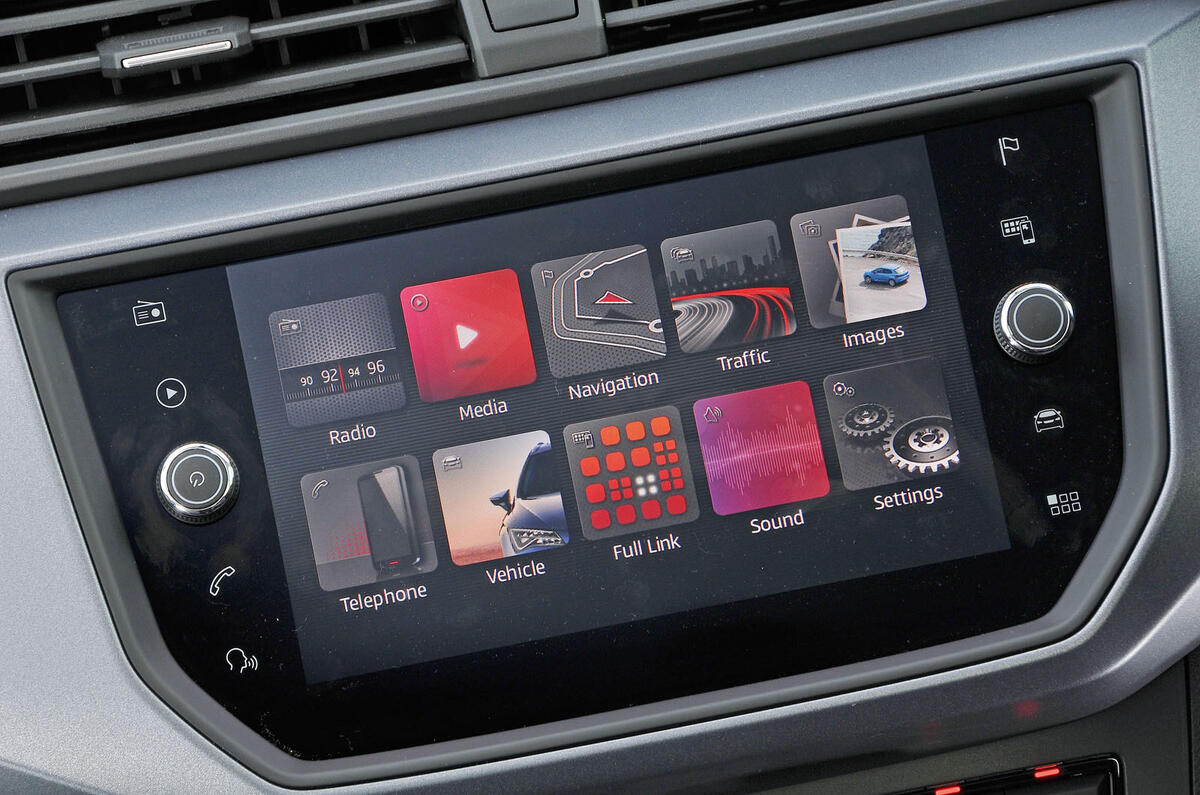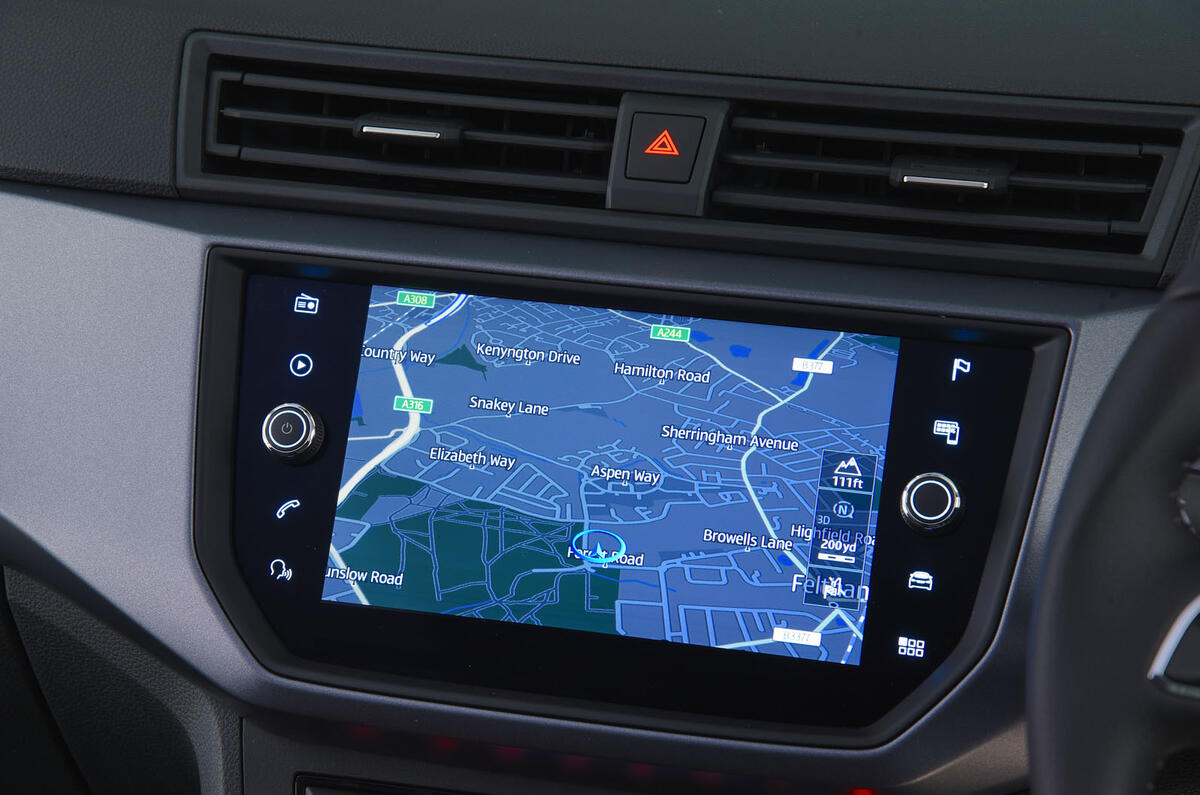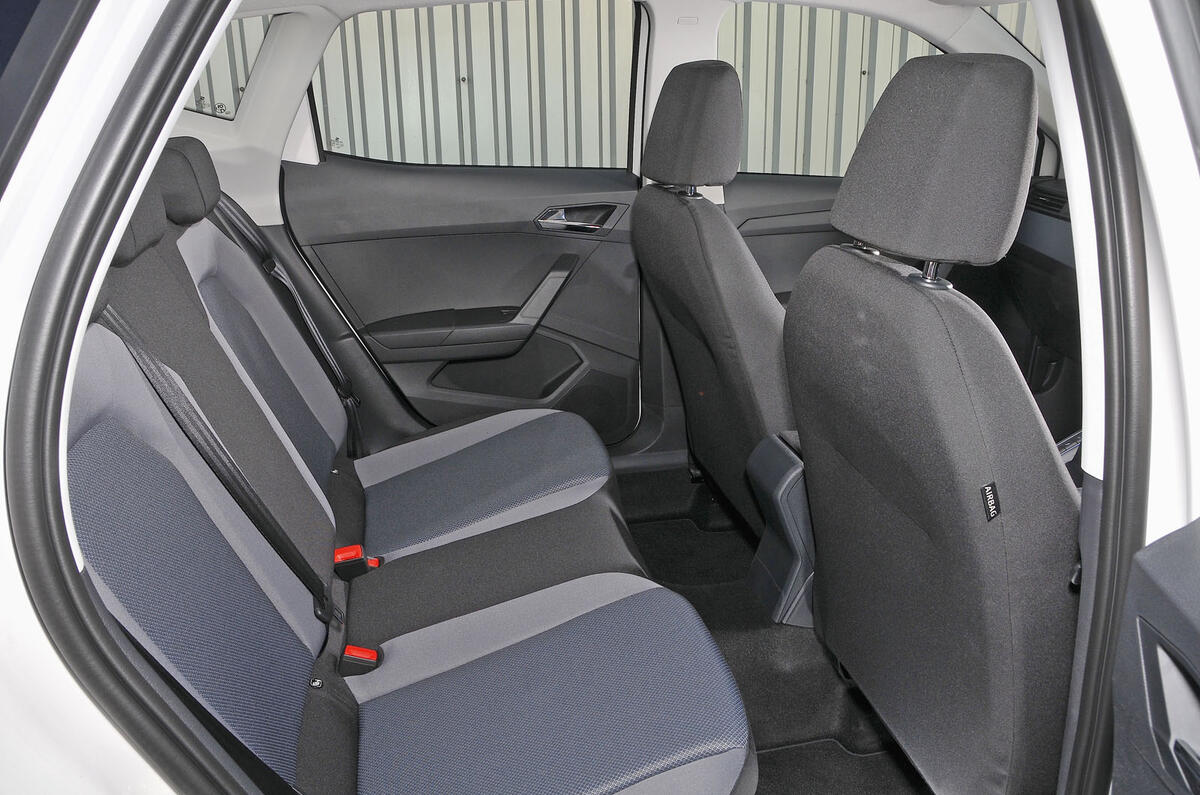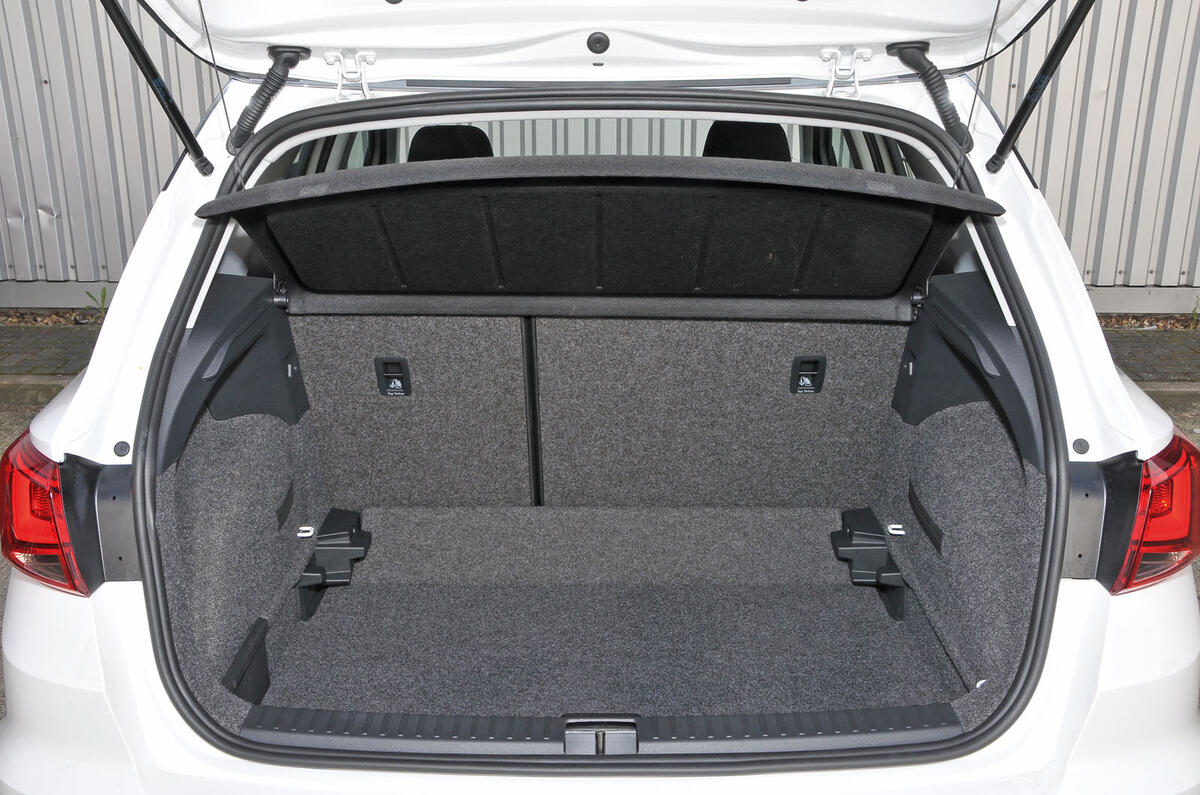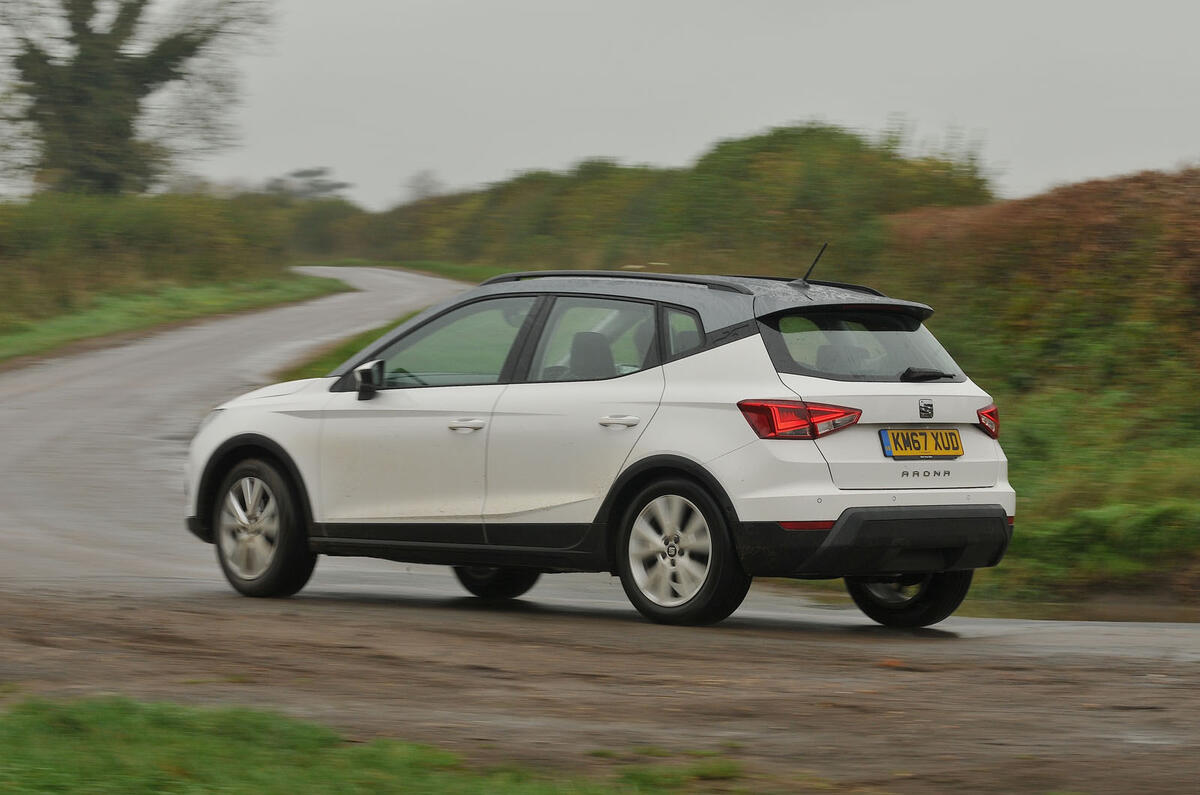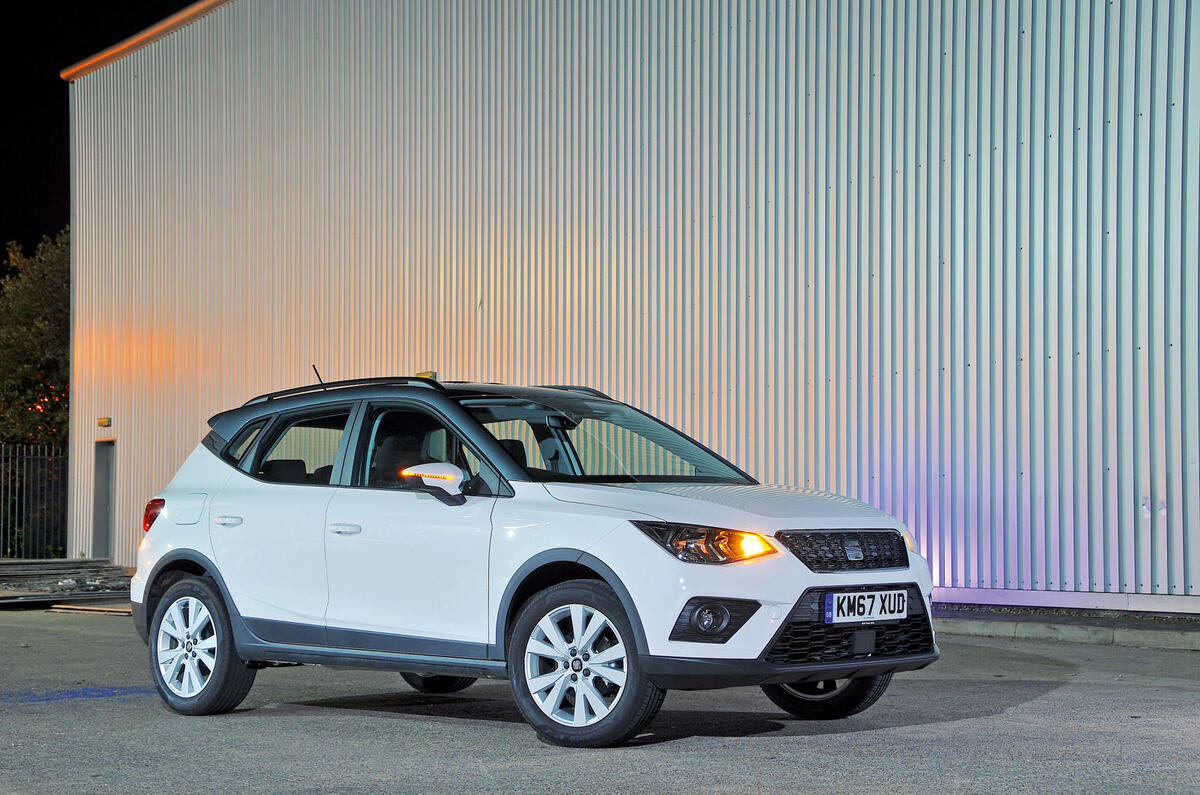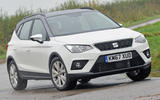Just as the Seat Ateca did, the Seat Arona borrows sparingly from SUV design archetype.
This is a smart, svelte and sporty-looking car that does without the bluff grille and squared-off wheel arches that you’ll find on certain rivals, and it succeeds very well in a visual sense – both as a crossover hatchback and as a contemporary Seat.
Unlike some of its opponents, the Volkswagen Group’s Spanish outpost is developing a line-up of appealing cars that hangs together as one, rather than as mutually discrete lines of SUVs and conventional cars – and that’s to be applauded.
The Arona may not have the visual charisma of the likes of the new Citroen C3 Aircross or the enduringly quirkiness of the Nissan Juke, but it’s undoubtedly a neat, pretty-looking effort.
It’s also one whose appearance can be tailored to personal preference, with its roof available in a choice of three body-contrasting colours if you want them, and in a total of 68 possible body colours among them in shades such as Eclipse Orange and Mystery Blue, which should distinguish the car very well on the road.
The Arona is the VW Group’s first crossover to be built on its new supermini model platform – the not so catchily named MQB-A0 architecture. It’s typical of the breed for its transverse front-engined, front-wheel-drive mechanical orientation and its torsion beam-style rear suspension.


